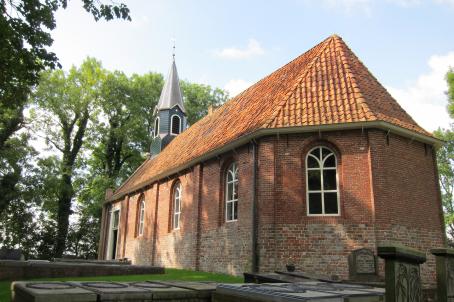Doopsgezinde Kerk
Mennonite church from 1838. The side walls are divided by lesenes, between which there is a semicircular closed window. It also has a framed entrance. This church is listed as a National Monument of the Netherlands.
Mennonite church from 1838. The side walls are divided by lesenes, between which there is a semicircular closed window. It also has a framed entrance. This church is listed as a National Monument of the Netherlands.
Single-nave in construction from the 13th century with a straight choir closure, in which two round-arched windows and parts of recessed panels of the top. In the side walls, there are traces of round-arched windows, entrances and a hagioscope. Strong uncut tower with high spire. In the church pulpit from 1718 with screwed columns and a sounding board. Communion table. Five gentlemen's pews, one with spindle friezes three others with knobs and richly carved rear panels, an 18th-century pew. Three 17th-century tombstones. In the tower bell from 1774. This church is listed as a National Monument of the Netherlands. On 8 November 2002, the restoration of the Dutch Reformed Church began. On Friday 16 January 2004, the church, which dates from 1280, was put back into use. It is striking that the vaults, reminiscent of the Catholic era, have been reinstalled. The gentlemen's pews, which were moved back during the 1978 restoration, are also back in their old place. Furthermore, moisture-resistant measures have been taken. The last service before the restoration was on 17 November 2002. During the restoration, church services were held in the De Wegwijzer community centre.

This church, located on a bank, is built on the foundations of its predecessor. The final form of this hall church, which was completed with a three-sided choir, was created in the new building (with old material) in 1729, as can be seen from the blue-glazed roof tiles.

A simple 17th century hall church with large round arch windows and a small roof turret. Both the north wall and the west wall contain an entrance under a basket arch.